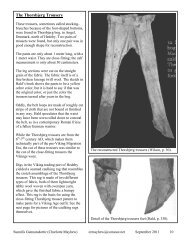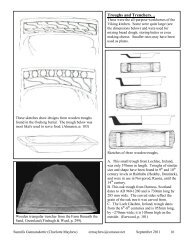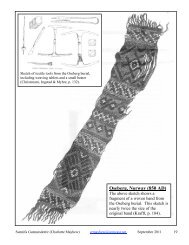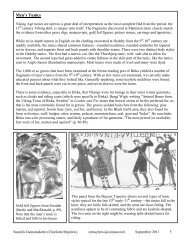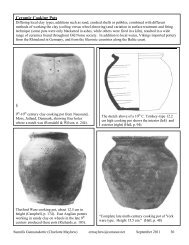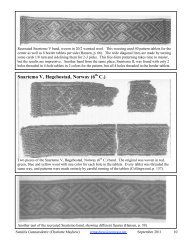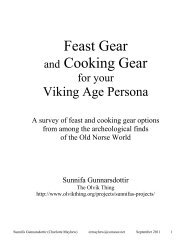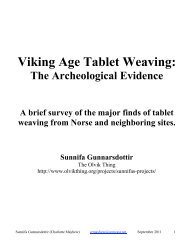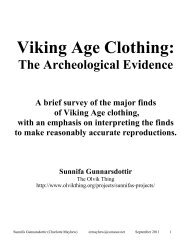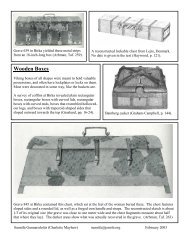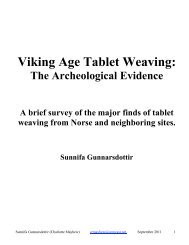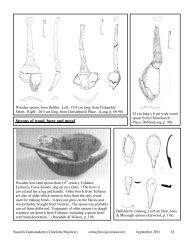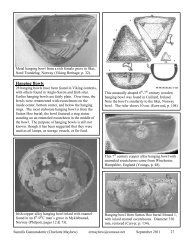Mammen, Denmark (970-971AD) - Olvik Thing
Mammen, Denmark (970-971AD) - Olvik Thing
Mammen, Denmark (970-971AD) - Olvik Thing
Create successful ePaper yourself
Turn your PDF publications into a flip-book with our unique Google optimized e-Paper software.
Approximately 1 metre of the tablet woven band was preserved; the entire band was at least twice as long.The band was 4.5cm wide and was woven in yellow, red, orange and green wool, and had a piece of greenstring sewn onto the band as an edging. The sketch above shows the pattern, which repeated its motifs alongthe length of the band. The workmanship of the tablet weaving is unusual, though the motifs are similar toothers found in Europe in the 11 th and 13 th centuries (Nockert, “A Scandinavian Haberget?”, p. 101).Leksand Cloak Band (11 th -13 th C.)The cloak was found buried in the deepest layer of a gravefield containing approximately 160 people underthe porch of a church in Leksand, Dalecarlia, Sweden in 1971. 30 coins found in the gravefield were datedfrom the 10th to the 14th centuries. Only the skull survived in this grave, but based on the other gravegoods, it was believed to be that of a middle-aged woman. The cloak was the only surviving textile. Thecloak is of particular interest because broken-lozenge twill was less common after the 10 th century in Europe.This reproduction of the Leksand cloak band is done in 20/2 worsted wool and 16/1 flax. The band isworked in 4 colors, and the pattern figures are outlined by soumak embroidery (Hansen, p. 71). Hansensuggests that the original band also had soumak weaving outlining the figures, which accounts for theslightly raised look of them. In addition, he believes there were vegetable threads missing, which has leantconfusion to the interpretations of the method of weaving. Hansen conjectures that the band was wovenusing the same technique as the Snartemo V band (Hansen, p. 51). If this is so, it would be evidence of thecontinuation of a complicated weaving technique spanning five centuries in Scandinavia.Another reproduction of the Leksand band showing the difference between weaving with the additionalvegetable warp thread added (the left side of the band), and the weaving without it (right) (Hansen, p. 42).Sunnifa Gunnarsdottir (Charlotte Mayhew) crmayhew@comcast.net September 2011 34



